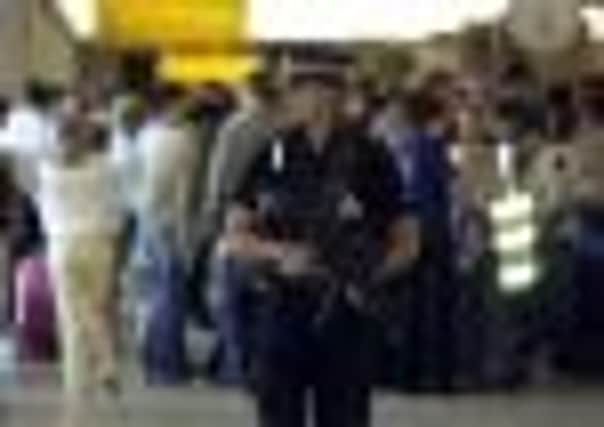Armed police to patrol all of Scotland


Police Scotland, the new single force that comes into operation in April, wants the countryside to have the same cover provided by firearms-trained officers in major urban areas.
Senior officers stress they do not believe gun-related crime has increased north of the Border but the initiative is partly a response to the Cumbria massacre in 2010 when taxi driver Derrick Bird killed 12 people and injured 11 more.
Advertisement
Hide AdAdvertisement
Hide AdFollowing the worst shooting-related crime in the UK since the Dunblane murders in 1996, there was criticism that armed officers took too long to get to the rural area near Whitehaven where Bird carried out his four-hour killing spree.
All 14 divisions of Police Scotland will now have their own firearms team with up to 400 officers trained to carry guns across the country.
Deputy Chief Constable Iain Livingstone, head of Police Scotland’s specialist crime division, said: “We are going to have a network of armed response units around the country. We feel that, in terms of keeping people safe, we have to have that footprint.
“Some areas currently don’t have them. We will introduce full-time, dedicated armed officers on patrol around the country with the ability to respond very quickly to any situation.
“That already happens in urban areas. We need that specialist, dedicated, high-level resource to deal with high-level threats nationwide.”
There were 514 firearms offences in Scotland in 2011/12, 21 per cent less than the previous year and the lowest figure in a decade. That fall has coincided with a decrease in crime generally to a 37-year low.
But although gun crime is relatively rare it is high-impact with results that can be devastating. When police were trying to trace Bird, after he had started his massacre, chief officers in Scotland were afraid he might cross the Border. That concern has led to the rolling out of firearms protection.
“What came out of Bird was the need to look at [areas of] geographic sparsity,” Livingstone said.
Advertisement
Hide AdAdvertisement
Hide Ad“In Cumbria [at the time] there was a minimal firearms threat, but the potential is always there.”
Other high-profile incidents that have had an influence on Police Scotland thinking include Raoul Moat, the former doorman who shot his ex-girlfriend Sam Stobbart, executed her new boyfriend Chris Brown, and then blinded PC David Rathband in Northumberland, in 2010. Rathband later took his own life. The Scottish initiative has been cautiously welcomed as a regrettable but necessary move. “I don’t think that anyone would warmly welcome the fact that we need more armed police to protect the public,” said a spokesman for Victim Support Scotland. “However, everyone should recognise that we’ve had some horrific incidents in recent years. Dunblane is still burned on everyone’s memory.
“Most people would recognise that armed police, on occasion, is a necessity but I am sure the procedures for issuing a firearm will be as stringent as ever.”
Gun control is now high on the political agenda in most western countries since the murder of 20 primary school children and six teachers in Newtown, Connecticut ten days ago. The killings carried out by 20-year-old Adam Lanza, brought back memories of the Dunblane murders in which 16 children and a teacher died.
The latest figures show there are 48,726 shotgun certificates and 25,831 other registered firearms in Scotland.
Up to now, many police forces have resisted arming more officers, preferring instead to carry out trials on the use of “tasers”, which use electronic shocks to disable offenders. However, there are concerns that tasers breach humans rights legislation.
Graeme Pearson MSP, a former senior police officer in Scotland, said that while he had been unconvinced of the need for tasers, widening the reach of firearms was a sensible move.
“Given that officers already have batons and CS gas, also giving them the capacity to taser seemed to me to a very invasive situation.”
Advertisement
Hide AdAdvertisement
Hide AdHe added: “One would hope that they [firearms officers] would never be used at all, but if there’s a demand that requires firearms, you want to have the proper officers on hand, trained and certified. It’s in those dark days when firearms are needed that we will be glad they were there ahead of time.”
Twitter: @Gareth_Rose